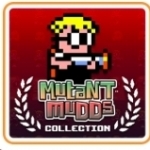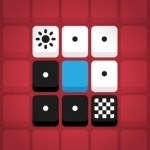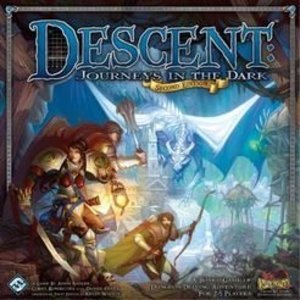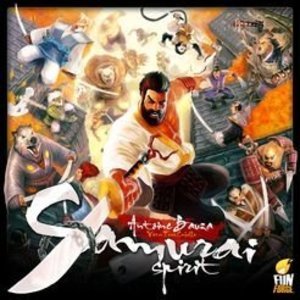BankofMarquis (1832 KP) rated No Time to Die (2021) in Movies
Oct 16, 2021
It will be up to the individual to decide whether this type of storytelling works for Bond.
For me, it does.
Picking up where SPECTRE left off, NO TIME TO DIE follows Bond and his lady love from that film, Madeliene (Lea Seydoux) as they are followed and threatened by agents from SPECTRE. After an action-packed opening, Bond heads into retirement only to be drawn back in.
Director Cary Fukunaga (BEASTS OF NO NATION) crafts a satisfying, if somewhat too long and dragged out, finale for Craig as Bond battles villains joined by old friends (and fiends) along the way (as a bit of a final Curtain Call for them all), meets some new allies (and adversaries) all while dealing with his own feelings.
And it is this part of the film that “Bond purists” will be the most annoyed about. JAMES BOND HAS FEELINGS! He isn’t just a “Super-Spy” with a quip and a gadget, Fukunaga and perennial Bond writers Neal Purvis & Robert Wade (along with Fukunaga and Phoebe Waller-Bridge) craft a Bond that has cracks in his veneer that show doubts and fears underneath.
This rounding out of the character works for me in this film, especially if you put this film in the context of all 5 Craig Bond films. It is a natural growth for the character and one that Craig handles well.
As for the performances, regular Bond players Ralph Fiennes (M), Naomi Harris (Moneypenny), Ben Whishaw (Q), Rory Kinnear (Tanner) and Jeffrey Wright (CIA Agent Felix Leiter) all have a moment (or 2) to shine and they show up on the screen like old friends showing up at a going away party. Christoph Walz also reprises his role of Blofeld from SPECTRE (it’s not a spoiler, it’s in the trailers) and it was good to see Blofeld and Bond play chess one last time and Seydoux’s performance as Bond’s “lady love” is “good enough”.
But it is the newcomers to this story that stand out to me - with one strong exception. Lashana Lynch (as a fellow 00 agent) and Billy Magnussen both shine in this film as do Ana de Armas as another femme that Bond encounters - this is the 3rd strong performance I’ve seen from the former model (following strong turns in BLADE RUNNER 2049 and opposite Craig in KNIVES OUT) and am eagerly awaiting what she will do next.
Only Rami Malek as villain Safin fails to be interesting and that’s where this film falls down. Safin’s encounters with Bond bring the energy and excitement down, thanks to Malek’s “underplaying” of a role that should have been overplayed. His performance just doesn’t work.
But, this is a Bond film, so the acting and plot always take a backseat to the action - and the action in this film is better than average, but not A-M-A-Z-I-N-G as one expects from Bond films. Couple that with Malek’s underwhelming performance and this Bond film will leave audiences with an unfulfilled feeling.
Unless, you are invested in the journey that Craig has taken Bond on - and the culmination of that journey to conclude this film. If you are invested in that, this film work. If you are not, it will not.
It worked for me.
Letter Grade: B+
7 1/2 stars (out of 10) and you can take that to the Bank(ofMarquis)
Paul Kellett (118 KP) rated Descent: Journeys in the Dark (Second Edition) in Tabletop Games
May 4, 2019
With a couple of big-box and half a dozen small-box expansions, not to mention the various hero & monster packs, there is a ton of stuff available and if you own everything, you will be able to choose from 72 heroes with 22 different class decks; fight against 45 different monster types, and encounter around 15 lieutenants over a total of 182 different scenarios. That's plenty to keep you quiet for a while.
So many cards...
Descent: An Overview In The Dark
Descent is a scenario-based game where you work through a tree of different missions, choosing the next one based on whether the heroes or the Overlord worn the last. Each scenario will have specific objectives - anything from stealing an item and reaching the exit to interrogating prisoners and defeating a fearsome Lieutenant of the Overlord. Some of the monsters to be encountered are specified in the scenario text with other free groups able to be chosen from traits specific to that scenario. This gives some variety meaning you will never face exactly the same monsters if you replay the scenarios.
The good players choose a hero from the stack of basic skill types - Fighter, Healer, Scout or Mage and then choose from one of the many class decks for each type so the Fighter could be a Knight or a Berzerker, the Mage a Necromancer and the Healer a Bard, etc. These decks give each hero their skills and form their general strategy.
Meanwhile, the Overlord player chooses one of two Basic decks of cards that will form the base of his defence against the heroes. One deck is more about springing traps while the other has more things to enhance monster attacks. After choosing the basic deck, the Overlord can choose a specialist deck. These can be used to fine tune the Overlord's strategy and at first, only one card is available, the others will be purchased with experience points after each scenario. Finally, if the relevant expansion packs are available, the Overlord can choose a Lieutenant deck which adds further depth to his strategy and also offers the chance to bring a powerful figure into play later in the campaign.
Solo? How So? Redjak has the answer.
With all that going on, it sounds like a fairly daunting if not impossible task to play a solo game of Descent but a fan going by the name of Redjak created two card-driven AI decks - Redjak's Automated Monster Variant (RAMV) and Redjak's Automated Overlord Variant (RAOV). These decks both allow a player, or group of players to play the game as a fully co-operative experience with the cards replacing the Overlord player.
I will say that it is preferable if you have a grasp of the basic rules before jumping into these variants as there can be a lot going on if you are trying to learn the game and the solo rules at the same time. It's probably best to only choose two heroes at first as playing four heroes is more involved but ultimately more rewarding.
These variants are available to download and print out and are also available from the Printer Studio website if you search, although if you are not in the US, then shipping gets expensive.
RAMV
The Monster AI deck is the simpler of the two AI's, being just concerned with the monster actions and leaving out all the Overlord's cards. I haven't played much with this variant but the rules are fairly straightforward. You will set up 4 decks - an Event deck, a Dark Influence deck, a Conditions deck and a Monster deck.
After choosing a scenario to play, you draw cards from the Monster deck, finding ones with icons matching those of the current scenario. This keeps things random and you will always have different things to fight. The selected monster groups will then be placed in "Teams" underneath a row of team cards that will give them their activation order. Finally you will place the encounter objective card for the current scenario. This will give you specific things for each monster group to focus on in terms of stopping you from winning.
You will take your turn alternating hero and monster groups, drawing cards at various points when the monsters should react to attacks, certain scenario triggers ond other in-game events.
It is a fairly simple system but it works really well, giving a solid, straightforward dungeon crawl feel of exploring a map and fighting monsters while trying to complete your quest. Definitely a good starting point and good if you want a 'quick' dungeon crawl.
RAOV
This is the meat, the full experience. Although daunting at first, if you are familiar with the game rules (and have possibly played RAMV a bit), then it will make sense once you get stuck in.
RAOV differs over RAMV in only having one deck, but the rule book is more in depth describing how everything gets played.
You set up as normal, decide on what decks the Overlord will be playing with, draw his starting hand of cards placing them face up on the table. (This variant uses D10 dice anytime you have to make selections)
and take all your heroes actions. If at any point one of your actions would trigger an Overlord card, then that card is played and discarded. Having an open hand means that there are fewer surprises and the Overlord cant be as evil as a human player would be, but it is still tricky and knowing what cards might trigger forces you to think about your strategy in a different way.
Once the heroes have all activated, then the Overlord take its turn, playing any cards that would trigger at the start of the turn. Then, you flip over the top card of the AI deck and activate the first monster group. These cards have a primary target, shown by the corresponding hero symbol and several secondary targets. This gives the monster a focus for its actions. The main text of the card is a list of actions and essentially you work down the list doing whatever actions you are able. Each monster that activates will draw a new card and follow it's orders.
That in a nutshell is it. The Overlord's cards will trigger at the first available opportunity and the monsters will follow a list of options. Once you get used to it, it flows really well and doesn't feel too fiddly at all.
An Open Dungeon
As well as the two AI variants, Redjak also created Delven Deep - a deck of cards each displaying a different map tile that you can use to play a completely randomly generated dungeon crawl. I have yet to try this out, but it is another option if you don't fancy playing through a scripted scenario and just want to explore a random map, killing things.
For The Digital Generation
Fantasy Flight Games have also released an official, free companion app on Android, Steam and IOS that will take control of the Overlord player. This app comes with, I think 2 campaigns - a short training story and a larger, full campaign. Other campaigns a random dungeon generator are available to purchase in the app. None of the printed scenarios are playable using this app and it doesn't use any of the overlord cards, plot decks, event cards or encounter cards.
I will say that I am not a fan of apps for board games and it was actually this app in particular that soured me on the whole idea. Many people really enjoy this app and it has breathed a new lease of life into the game, but unfortunately on my first playthrough, it decided to crash near to the end of a campaign and I essentially lost 6 hours of gaming. I would have had to start all over again from the beginning. That was not a fun experience and put me off completely.
The app borrows heavily from Redjak's work, giving you a list of options to work through when activating the monsters, and various other triggers. Unlike the printed scenarios, all the maps in the digital stories are hidden until you explore them, so you never know what you will encounter. Also, there is a hidden timer in the program that means if you take too long exploring, fighting or whatever, then the game will start throwing nastier and nastier events at you. This makes the game much more of a race than its cardboard cousin and ramps up the difficulty at a fast pace making you feel like you never have enough time to do what you want.
In My opinion, RAOV is the best way to play Descent solo. It uses absolutely everything in the box and gives the most realistic feeling of playing the complete game.
Purple Phoenix Games (2266 KP) rated Samurai Spirit in Tabletop Games
Jun 12, 2019
As a Samurai, you spend your life traveling across the land to help those in need. Most recently, you and a handful of other Samurai have been contracted by a small village to defend them against a clan of invading raiders. Only by working together, and by using your extensive training, will you succeed in keeping this village safe!
Samurai Spirit is a cooperative game of press-your-luck. Players take on the role of a Samurai, each with a unique power, and take turns drawing cards and fighting off the invaders or offering support to your fellow Samurai. Invaders can have recurring negative effects, so strategize wisely on how best to combat them and see how far you can push your luck each round. If you are able to survive through 3 rounds (waves) of invaders with at least one surviving farmstead and family, the Samurai are victorious and the village is saved! If any of the Samurai are killed, or the village has been completely destroyed by invaders, then the game is lost. As a solo game, Samurai Spirit plays essentially the same as in group play, with only 2 main differences – the solo player controls 2 Samurai instead of 1, and the support tokens from the unused Samurai are each available for use once during the game.
For such a neat theme, this game falls short for me. It seems simple enough, but there are areas of ambiguity in the rules that lead to some confusion. For starters, the text size is so small that I am not able to find any information at a quick glance! The text itself is not always clear either – like when, at the end of a round, the rules say to collect all cards used this round, does that include cards that have been discarded due to Samurai abilities? How about the cards of the Intruder stack that are presumably discarded after being revealed? The rulebook offers no clarification, and I honestly still don’t know the right answer.
The order/layout of the rules feels mismatched too – relevant information is not always grouped together, and I find myself flipping between several pages at a time trying to figure out one single thing. For example, in the ‘Fight’ action description, it says that if you reach your Kiai value exactly, you can activate your Kiai ability. You have to turn the page to a different section to see exactly what activating that ability means, and then you have to flip an additional 2 more pages to see what each individual Kiai ability is! Why not just put them all in one place? It would certainly be easier to understand if all relevant information was grouped together.
The prominent mechanic of Samurai Spirit is press-your-luck, and I would definitely say that this game is very luck-based. When setting up the game, the initial deck of cards is randomly selected and that can impact whether or not you are able to complete certain requirements each round – if there aren’t enough hat/farm/doll cards for each Samurai, you are guaranteed to incur a penalty at the end of every round. Actual gameplay is very luck-based too, and for me it feels like there are no good ways to strategize – your choices are all dependent on the luck of the draw. You can push your luck to draw more cards and use special abilities, but since you are suffering from recurring penalties each turn, it feels futile to keep going at a certain point.
For me, Samurai Spirit is repetitive and kind of boring – suffer penalty, draw card, and repeat until you eventually pass or the deck runs out. It’s like a too-complicated version of blackjack in which the deck is stacked against you. It’s such a bummer because the theme and artwork are neat, and the gameplay (in theory, at least) should be effective. But the actual execution is too reliant on luck to be successful.
I do quite a bit of solo gaming, but this game is never one that I willingly decide to play. I honestly only broke it out recently as a refresher for this review. Perhaps it is better at higher player counts, but since that is not where most of my gaming occurs, Samurai Spirit is a dud for me.
https://purplephoenixgames.wordpress.com/2019/02/06/solo-chronicles-samurai-spirit/

Mutant Mudds Collection
Video Game Watch
It’s the greatest collection of muddy games under one roof! Revisit the platforming fun of the...

Le Havre (The Harbor)
Entertainment and Games
App
In this universal adaptation of the popular board game (winner of a 2009 International Gamers Award,...

follow.trail
Games
App
Follow.trail is a minimalist puzzle game, where the goal is to follow the trail of dots without...

Terminator Genisys: Future War
Games
App
Terminator Genisys: Future War is a free-to-play mobile strategy game where the human Resistance is...

Lumino City
Games and Entertainment
App
** BAFTA - Winner 2015 ** Lumino City is a wonderful puzzle adventure crafted entirely by hand out...

VIPBANKO - Banko Maç İddaa Tahminleri
Sports and Utilities
App
Football Betting Tips Basketball Betting Tips Ice Hockey Betting Tips Nba Betting Tips Free...

Winmau Darts Scorer
Sports and Utilities
App
Get the best selling Darts Scorer on the App Store for around the average price of a pint! 5 Star...


